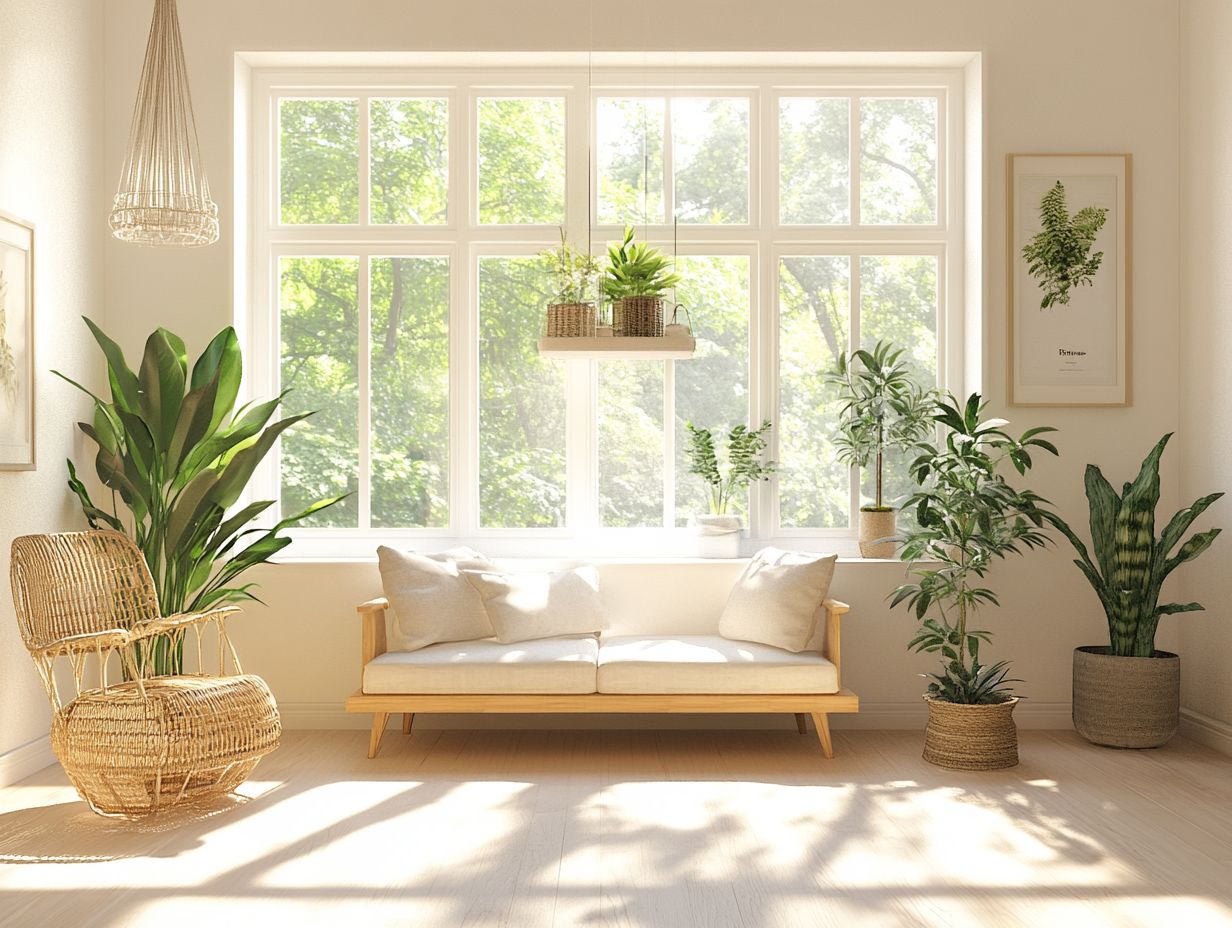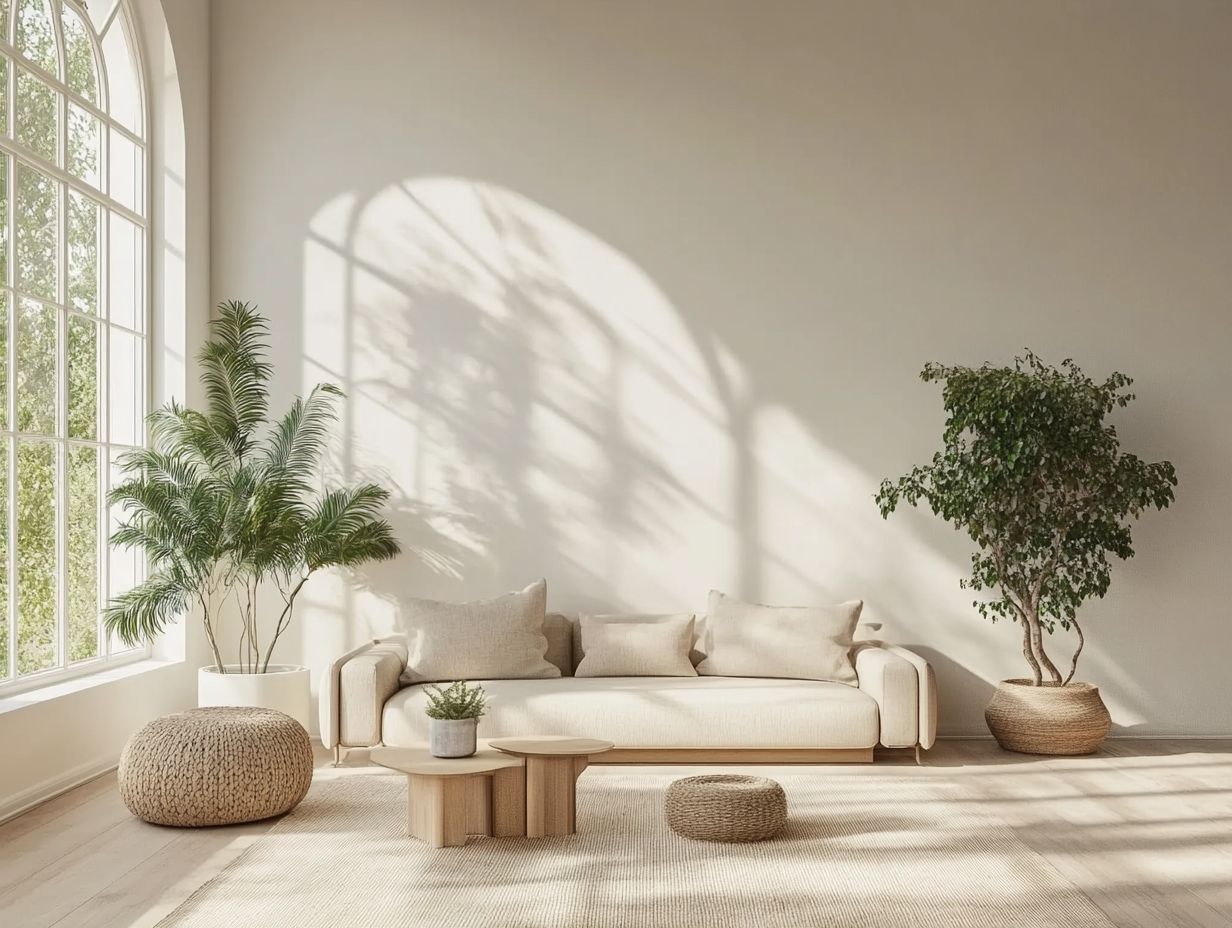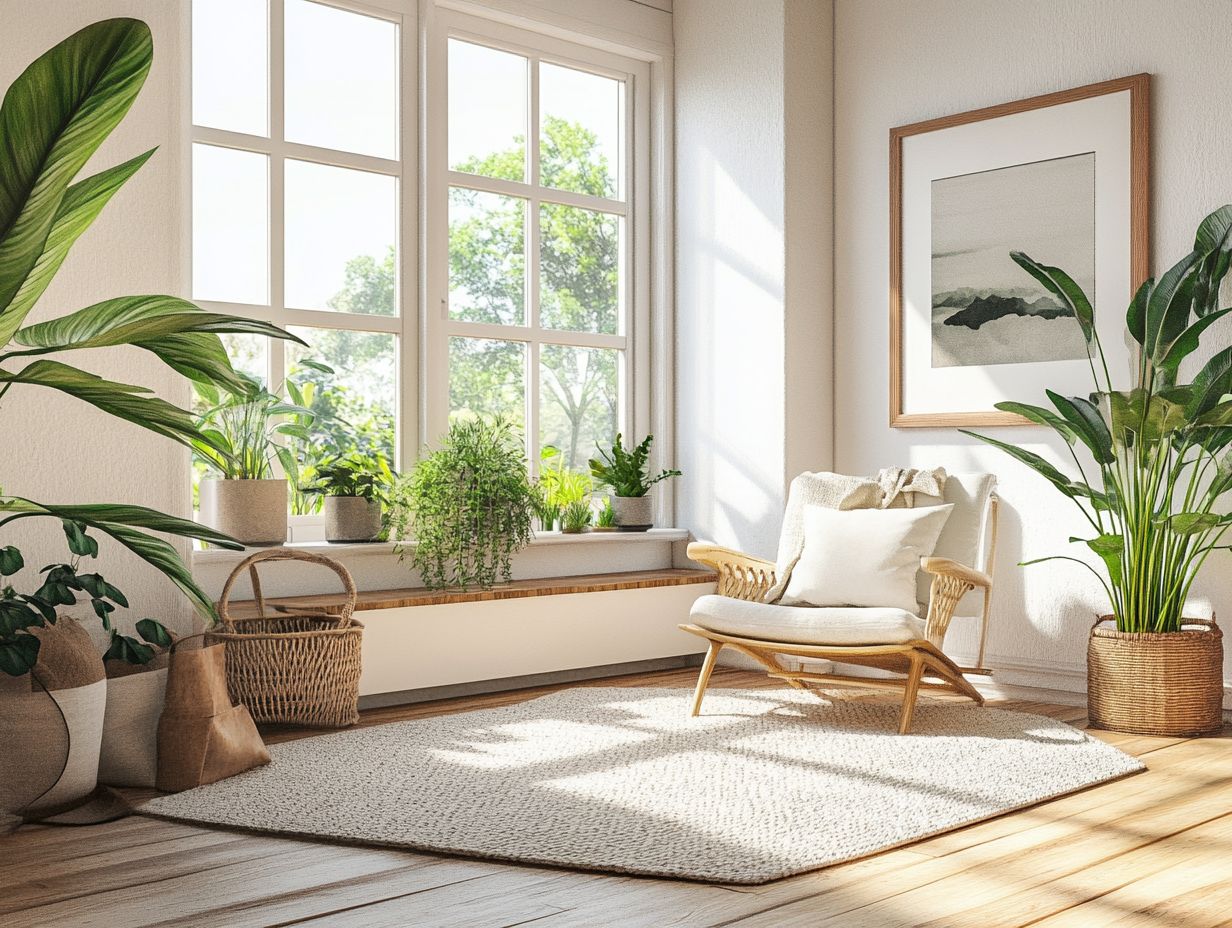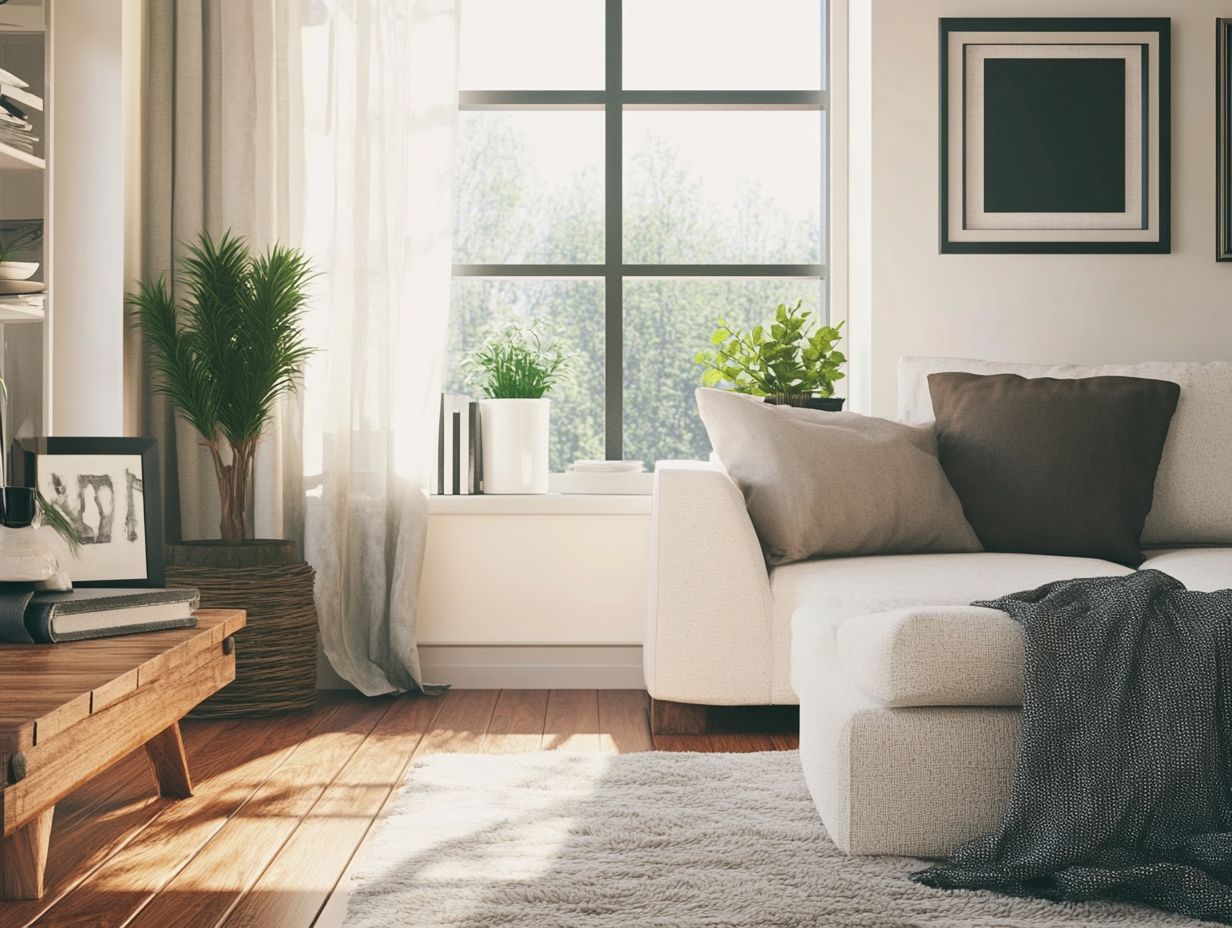Maximizing Natural Light in Small Spaces
Natural light is not merely a delightful enhancement; it plays a crucial role in elevating both mental and physical health and contributes significantly to well-being. In compact spaces, leveraging this essential resource can metamorphose a confined area into a luminous and welcoming sanctuary.
This exploration delves into sophisticated design strategies to optimize and maximize natural light, covering everything from choosing the perfect windows to the artful use of mirrors and light color palettes. It also addresses furniture arrangement and the delicate balance of maintaining privacy while reaping the rewards of sunlight.
Discover how to make your home brighter and healthier today!
Contents
- Key Takeaways:
- The Importance of Natural Light
- Design Strategies for Small Spaces
- Choosing the Right Windows
- Using Mirrors and Reflective Surfaces
- Using Light Colors and Materials
- Strategic Furniture Placement
- Maintaining Privacy with Natural Light
- Frequently Asked Questions
- 1. How can I maximize natural light in a small space?
- 2. What types of mirrors should I use to maximize natural light?
- 3. Are there any specific colors that can help maximize natural light in small spaces?
- 4. Can furniture placement affect the amount of natural light in a small space?
- 5. How can I utilize natural light in a small space at night?
- 6. What are some other ways to increase natural light in a small space?
Key Takeaways:

- Maximizing natural light can positively impact both mental and physical health.
- Strategic furniture placement, light colors, and the use of mirrors and reflective surfaces can help create a welcoming environment and maximize natural light in small spaces.
- When choosing windows for small spaces, consider options that allow for ample natural light while still maintaining privacy.
The Importance of Natural Light
Natural light is an essential element that elevates the aesthetic charm and overall well-being of tiny homes and small living spaces. By integrating natural light into your design, you not only enhance the beauty of these compact environments but also foster significant benefits for your mental and physical health.
As energy-saving solutions gain importance, harnessing natural light can help reduce your electricity bills while improving indoor air quality. This transformative quality of natural light is vital for creating an open layout that makes the most of your space, even in the most limited areas.
Benefits for Mental and Physical Health
Exposure to natural light offers significant benefits for your mental health and physical well-being, especially in tiny homes and small living spaces.
By allowing sunlight to pour in, you can enjoy a remarkable boost in your mood, leading to enhanced productivity and creativity throughout your day. Natural light plays a crucial role in regulating the natural sleep-wake cycle, promoting better sleep quality and overall mental wellness.
When combined with proper ventilation and high indoor air quality, these elements work together to create a tranquil environment that uplifts your spirits and helps reduce stress levels. Therefore, it’s essential for anyone living in compact spaces to maximize their sunlight exposure while prioritizing air circulation, ultimately fostering a healthier and happier lifestyle.
Design Strategies for Small Spaces
Achieving a stylish and practical design in small spaces demands strategic thinking focused on maximizing natural light and optimizing layout. In tiny homes, where every square foot is precious, intelligent design choices can transform limited areas into inviting environments filled with warmth and brightness.
By embracing techniques like open floor plans and multi-purpose furniture, you can create a sense of spaciousness while ensuring adequate ventilation. Incorporate helpful lighting tips to elevate your space, which not only enhances the ambiance but also helps save energy and reduce costs, improving your living experience.
Maximizing Natural Light in Limited Space
Maximizing natural light in small spaces requires strategic thinking. You can explore techniques for maximizing natural light in tiny house decor by focusing on window placement and design choices that enhance light flow.
Consider adopting open floor plans. These designs create a sense of spaciousness and allow light to flow freely between rooms.
By opting for light-colored walls and furnishings, you can effectively reflect sunlight, making smaller spaces feel airy and inviting.
Incorporating mirrors is another clever way to amplify natural light. Mirrors create an illusion of depth and brightness that elevates the entire atmosphere.
If you re looking to improve light intake on a budget, think about DIY window treatments that offer flexible light control.
You can also experiment with installing skylights or solar tubes, allowing sunlight to flood in without the hassle of extensive renovations.
Choosing the Right Windows

Selecting the right windows is crucial for maximizing natural light in compact living spaces. This choice elevates the aesthetics of your home and enhances energy efficiency.
Types of Windows for Small Spaces
Several window types work well in small spaces. Corner windows allow more light and views, while foldable doors that enhance the indoor-outdoor connection are vital.
These options elevate the aesthetic appeal of a room and create a more open and inviting atmosphere.
For instance, modern apartments in Chicago often incorporate large bay windows that extend beyond the facade, allowing sunlight to pour in from multiple angles.
In California, homes often feature expansive sliding glass doors that seamlessly blend indoor and outdoor spaces. This design floods your space with beautiful daylight and highlights the vibrant surroundings.
By choosing the right window designs, you can significantly enhance energy efficiency and reduce reliance on artificial lighting, transforming how you experience your living spaces.
Using Mirrors and Reflective Surfaces
Using mirrors and reflective surfaces is a masterful technique in interior design that enhances natural light in small spaces. This approach amplifies brightness and creates an enchanting illusion of openness.
Tips for Enhancing Natural Light with Mirrors
To elevate the presence of natural light in your space with mirrors, think about placing them strategically to enhance existing light sources. Opt for glossy finishes that amplify reflectiveness.
Positioning mirrors directly across from windows captures and distributes daylight throughout the room, effectively brightening shadowy corners.
Placing a large mirror near your plants adds depth and showcases their vibrant green hues, infusing life into the ambiance.
By pairing mirrors with soft furnishings in complementary tones, you can achieve a harmonious and cohesive aesthetic. Don’t shy away from experimenting with various shapes and sizes to enhance the character of your space.
Using Light Colors and Materials
Using light colors and materials is an essential strategy for optimizing natural light in small spaces. This approach enhances brightness and cultivates an inviting atmosphere that transforms the area into a warm and welcoming sanctuary.
Try these tips today to brighten your home!
How Color and Material Choices Affect Natural Light

Your choices in color and materials significantly influence how natural light is perceived and utilized within a space, affecting both energy efficiency and atmosphere.
For instance, opting for a light color palette on the walls allows sunlight to bounce around, making a room feel more open and airy. In contrast, darker shades tend to absorb light, fostering a cozy atmosphere. When selecting materials, consider incorporating reflective surfaces like polished wood or glass to amplify daylight.
In smaller living spaces, a thoughtfully chosen light color palette, paired with matte or satin finishes, can enhance brightness without overwhelming your senses.
Incorporating elements like large windows or glass doors creates a seamless connection between indoor and outdoor spaces. This allows you to engage with nature while optimizing energy savings through energy-saving techniques that use sunlight for warmth.
Strategic Furniture Placement
Strategic furniture placement is crucial for optimizing light flow in your small living space. It can dramatically enhance how natural light interacts with your environment. By thoughtfully arranging your furnishings, you can create an inviting atmosphere that maximizes brightness and elevates the overall aesthetic of your home.
Optimizing Light Flow with Furniture Placement
To optimize light flow through your space, use light-colored furniture and arrange it thoughtfully to avoid blocking windows. This approach not only elevates the overall brightness of a room but also fosters an inviting atmosphere.
By selecting soft hues like whites, creams, and pastels, you can effectively reflect sunlight, making your spaces feel open and airy.
Keeping window areas free from large obstacles is essential. This allows natural light to pour in unhindered and illuminate every corner. Positioning larger items, such as sofas or bookshelves, against walls rather than in front of windows ensures maximum light penetration.
Incorporating mirrors in strategic locations can amplify light distribution, creating the illusion of a more expansive and well-lit area.
Maintaining Privacy with Natural Light
Finding the right balance between privacy and natural light in small spaces can be a rewarding challenge. It requires meticulously curated window treatments and savvy design strategies that elevate both functionality and aesthetics.
Balancing Natural Light and Privacy in Small Spaces
Balancing natural light and privacy in small spaces calls for effective strategies that make the most of thoughtfully designed window treatments.
Incorporating sheer curtains allows you to gently diffuse sunlight, creating a warm and inviting atmosphere while still offering glimpses of the outside world. Adjustable blinds provide you with the flexibility to control exposure throughout the day.
Consider innovative design choices like strategically placed mirrors and light-colored surfaces; these can enhance your perception of space while beautifully reflecting natural light. Not only do these methods respect your personal privacy, but they also align with sustainable living principles by promoting eco-friendly materials and maximizing natural resources, enriching your overall living experience.
Frequently Asked Questions

1. How can I maximize natural light in a small space?
To maximize natural light in a small space, strategically place mirrors, use light-colored reflective surfaces, and keep windows unobstructed.
2. What types of mirrors should I use to maximize natural light?
For small spaces, it’s best to use large, full-length mirrors that can reflect light throughout the entire room. Another option is to use mirrored furniture or wall panels.
3. Are there any specific colors that can help maximize natural light in small spaces?
Light, neutral colors such as white, beige, and pastel shades are ideal for small spaces as they reflect light, making the space appear brighter and more spacious.
4. Can furniture placement affect the amount of natural light in a small space?
Absolutely! Keep furniture away from windows. This simple step lets the sunshine in and brightens your space.
5. How can I utilize natural light in a small space at night?
Want to enjoy more light at night? Use sheer curtains or blinds to let that precious light in while keeping your privacy intact!
6. What are some other ways to increase natural light in a small space?
Mirrors and light colors help increase natural light. Use see-through furniture, lightweight window treatments, and light-enhancing plants for even more brightness.






